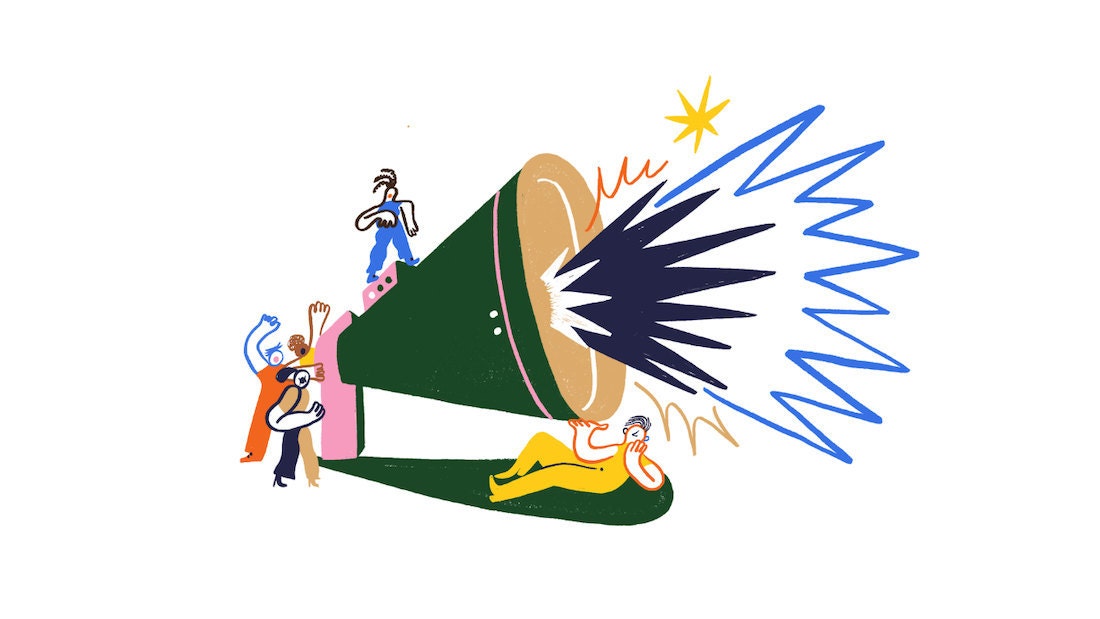Search engine optimization, or SEO, is the art of optimizing your website for search engines. What is a search engine exactly? In the simplest terms, search engines help people find what they’re looking for online. You’ve probably heard of—and used—search engines like Google or Bing to find information about a topic, go to a particular website, or shop for something online.
This guide will focus specifically on how to optimize your shop and listings for the biggest search engine in the world: Google. (For tips on optimizing your listings for Etsy search, read The Ultimate Guide to Etsy Search.)
Why Google SEO is important to your business
Why Google SEO is important for your business
SEO is an organic, or unpaid, way to drive traffic to your pages. Billions of searches are made on Google every day, and many online shoppers depend on Google to find the exact items they’re looking to buy. Making sure your unique brand, and the products you sell, are discoverable through search can help your customers find you again to make a repeat purchase. But it can also help potential customers discover your brand, including people who have never shopped on Etsy before.
Plus, a site that is optimized for search engines is also good for shoppers. Search engines want to know that users found the information—or product—they were searching for. A lot of SEO best practices are best practices in general because they keep the shopper top of mind.
By selling on Etsy, you have access to built-in support too. Google SEO is not something where an individual seller can do everything, and there is a lot going on behind-the-scenes. In fact, there is an entire team at Etsy dedicated to SEO for search engines like Google and Bing. That team is constantly working on improvements and new projects to help drive organic search traffic to sellers.
Glossary
There are a few definitions you should know that will help you better understand SEO.
- Relevancy: How useful your page is to a searcher. Search engines determine relevance by looking at the content and links on your pages and deciding how related they are to the search a user made.
- Ranking: Where your page appears in search results. Google ranks pages based on many factors, including relevancy and context.
- Search query: The words a user types into a search engine. Also known as search terms.
- Keywords: Another name for a search query. A keyword can refer to individual words like “necklace” or phrases like “personalized gold bar necklace for mom.” Researching keywords can help you figure out words and phrases to use on your pages.
- Search engine results page (SERP): This is the list of results that shows up when you enter a search in Google.
How search engines work
Where you appear in results is called your search ranking. Rankings are always changing, and Google frequently makes updates to how it determines a page’s rank, but optimizing your Etsy shop and listings using SEO best practices can help your pages appear in search results.
When a user searches on the web, the search engine scans all the pages it has “indexed,” or previously discovered, looking for pages that match the user’s search query and intent.
A page is indexed if it has been visited by the Google crawler (a.k.a. "Googlebot"), analyzed for content and meaning, and stored in the Google index. You can think of the Google index as a massive database, or library, of web pages. Indexed pages can be shown in Google search results. If a page is not indexed by Google, it will not be shown on a search engine results page.
When Googlebot scans a page, it’s looking for context clues to determine what the page is about. The page’s content can help the bot figure out what the page is about—this may include the title, headings, description, images, and video.
Indexing is an important part of showing up in Google Search, but how do you check whether your Shop page and Listing pages are being indexed by Google?
It takes just a few seconds. Go to Google.com and type in site: and add the URL. If your page shows up, Google has indexed the page.
If your page does not show up, it means Google has not yet indexed the page. If your page doesn’t show up, don’t freak out. Indexation does not happen overnight, and Etsy’s internal team is dedicated to making improvements that will help increase indexing. One thing you can do in the meantime: Build quality links to your Etsy from around the web. If you have your own website, blog, or social media page, link out to your Etsy shop and listings. This can help Google find those pages, and it also helps shoppers navigate to your shop to make a purchase.
Brainstorming keywords
Keywords are the words and phrases people use to search on the web. You should optimize your Etsy pages to contain the keywords your customers might be searching for. But take note: The keywords you use on your site should be relevant and specific to your business and the types of searches you want to appear in.
Keywords related to your brand
Make your first goal to have your site appear in searches for your brand, which are called branded searches. You’ll want your website to appear in searches for your brand name and any product names that are totally unique to you. This way, customers who have already purchased from you or new customers who discover your brand through a press mention or at a craft fair can find you again.
Keywords related to your products
Getting as specific as possible with the keywords you use on your site will make your page more relevant to the search—and shoppers who find exactly what they’re looking for on your website are more likely to make a purchase. An online shopper who’s looking for necklaces to purchase is unlikely to just type “necklace” into Google. They probably have an idea of the type of necklace they want to buy, like a “personalized gold nameplate necklace” or a “chain necklace with heart lock.” Search engines want to deliver relevant results, so use all the opportunities you have to describe your site, but keep your keywords specific to your shop and product offerings.
How to research popular keywords
So how do you know which keywords are best for your website? Start by thinking about how you would search for your products or brand. Keywords should feel natural. You can get more ideas by typing a few words or the beginning of a phrase into Google to see what related phrases other people are searching. For more ideas, check out the Related Searches that show up at the bottom of a SERP, or use the People Also Ask section to gain insights into the types of questions people have when searching for a particular type of product. You may be able to address some of those questions in your listing descriptions.
Google also offers a few tools you can use to research the popularity of certain keywords and searches. Google Trends lets you explore different search terms and see their popularity over time. You can also see a list of related terms that might be good keywords for your site and “rising” search terms that are gaining popularity. These “rising” terms can help you identify emerging trends in your industry—a great place to look for content ideas for your site.
For example, comparing the search terms “personalized jewelry” and “custom jewelry” reveals that more people are searching for “custom jewelry” and that search traffic increases dramatically in December. Looking at the rising related searches shows you that lots of people have been searching for “personalized handwriting jewelry.”
Optimizing shop pages
Your shop page is the first type of Etsy page you can optimize for Google SEO. Your shop URL will look like etsy.com/shop/shopname.
Description
Google likes to see your expertise, authority in your niche, and trustworthiness as a seller. So when writing your shop description, tell your story. Talk about your creative process. Include information about your background and how you got into creating. Highlight your years of experience or any credentials. Not only is this important to Google, it’s also important information for potential buyers too.
Also, fill out as much information as possible about your shop policies. This isn’t just an SEO thing; it’s also a better user experience. Shipping, returns, and exchanges in particular are critical information that a shopper will consider when looking to buy a product.
Images and Video
Consider adding a video and multiple photos to your About section. Photos and videos are another way to show up in Google search.
Optimizing your listings
Listing pages, or product listing pages, are the second type of page you can optimize for Google SEO. Here are three elements of the page to want to focus on.
Listing Title
Write listing titles that accurately reflect the product you’re selling. A person should be able to read the title and immediately understand the listing. The first 50-60 characters will appear in the Google search engine results page, so put the most relevant and important words first.
For instance, a title that is “Personalized Gift for Mom, Personalized Necklace for Mom” or “Handmade Ceramic Mug | Unique Tea Mug | Coffee Mug with Lid” repeats a lot of the same words and doesn’t sound like a human wrote it. On the other hand, a title like “Personalized Necklace for Mom with Children's Names”or “Ceramic Coffee Mug with Lid, Handle, and Spoon” is more descriptive, helpful, and easy to read.
Listing Description
Descriptive copy helps Google and shoppers better understand what your listing is about, so craft listing descriptions with this in mind. Don’t worry about trying to use your keywords over and over again. Aim for writing that sounds natural.
The first few lines should focus on the product, and make it clear what you’re selling. Use the description to go in-depth about your product and its unique selling points. Include information about sizing, colors, materials, features, and any customizations available.
Try formatting your description using shorter paragraphs and bulleted lists for readability, but don’t shy away from lengthy descriptions. Being descriptive will help with SEO. Fill out all fields of information possible, including payment options, policies, and delivery options, along with frequently asked questions. Payment and shipping information in particular is very critical because it can be a decision factor for buyers.
In essence, you should aim to write content that your customers will want to read and find useful. Ask yourself: If I were shopping for this, what would I want to know? Google and users both like to see helpful, descriptive content, so if the information is helpful and relevant, keep it in! For more information, read 5 Tips for Writing Listing Descriptions.
Images and Video
Images and video are incredibly important for SEO. Not only do they provide contextual information for Google to understand the page, but your listing pages can also show up in the Google Images and Google Video tabs.
Add multiple product images to your listing. Etsy sellers with English as their default language can also add descriptive alt text to their images. This is extremely helpful for SEO. Alt text, which stands for alternative text, is designed to describe images for people with visual impairment, and it can also help your page appear in Google Images.
To write high-quality alt text, you’ll want to accurately describe what’s shown in the photo. You can include information about color, texture, and material too. One word of warning: Don’t try to add random keywords into the alt text field in an attempt to improve your rankings. This is another form of keyword stuffing, and it’s unhelpful for people using screen readers to understand the images on a page.
In addition to images, add a listing video if you can too. They’re a great way to bring your products to life for buyers, and could increase your visibility in Google search results.
Practices to avoid
Search engine algorithms use many factors and signals to display search results. It’s impossible to know all the factors involved, but there are some practices that are known to have potentially negative impacts. Google penalizes sites for trying to game the system, so creating helpful content for your site, written in natural language, is the best way to avoid a penalty. Google may rank pages lower in the search results if you use practices meant to “trick” their bots.
Focus on providing potential shoppers with helpful, informative content about your product offerings and avoid these don’ts.
- Don’t “keyword stuff” your pages. Using lots of irrelevant keywords on your site in the hopes of appearing in more searches, known as “keyword stuffing,” can actually hurt your efforts to boost your search ranking.
- Don’t add unrelated keywords to your pages in the hopes of ranking for these terms on Google. If it’s a stretch to talk about, don’t do it! It’s important to make sure that you’re accurately describing your products in the listings or other offerings.
- Don’t buy links. There are some less-than-reputable sites that allow you to purchase links to your site in the hopes of boosting your site’s ranking, but Google knows when traffic isn’t coming from a quality site. You could be penalized for trying to artificially manipulate your ranking.
- Don’t just focus on the search sites. Think about how your brand will be found on sites like YouTube, Facebook, etc. Whenever possible, use the same username across platforms—this can help customers searching for your brand discover your social media pages. Always include a link to your shop or website on your profile so that customers who discover you through social media can find and shop your products.
- Don’t take users to a dead end. Search engines want to help users find what they’re looking for. If you have broken links or pages on your site that are taking customers to a 404 page (the error page a user sees when a web page can’t be found), that could hurt your search ranking. Work quickly to fix any broken links on your shop or listing pages.
Note: This advice is intended for sellers who are optimizing their Etsy shop and listing pages for Google. For advice on optimizing your shop for Etsy search, check out our Ultimate Guide to Etsy Search.
This article is not sponsored or endorsed by Google or Microsoft. Google, Bing and other marks mentioned in this article are trademarks of their respective owners. This information provides an overview for educational purposes only, and is subject to change over time. It is not intended to create, and receipt of it does not constitute, a consultant or independent contractor relationship. The authors, Etsy, Inc. and Etsy Ireland UC disclaim all responsibility for any and all losses, damages, or causes of action that may arise or be connected with the use of or reliance on these materials.
Go back > The Ultimate Guide to Marketing
 Words by Etsy Staff
Words by Etsy Staff




